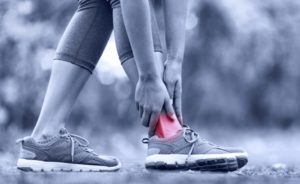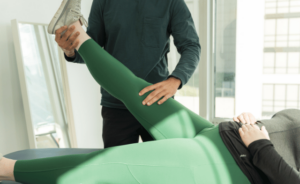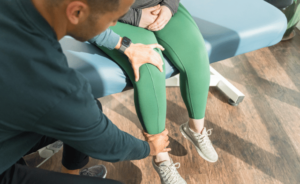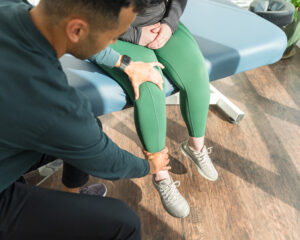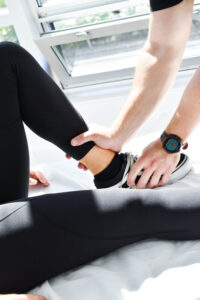Introduction
Poor posture not only affects your appearance but can also lead to a range of health issues, including neck and back pain, reduced mobility, and even headaches. Fortunately, there are effective methods for improving and maintaining good posture, one of which is Intramuscular Stimulation (IMS). In this blog post, we’ll explore the critical connection between IMS and posture correction and how it can help you achieve a healthier, more aligned life.
For IMS treatments, we recommend the following:
Understanding the Impact of Poor Posture
Before diving into how IMS can help correct posture, it’s essential to understand the ramifications of poor posture. Modern lifestyles often encourage habits that contribute to poor posture, such as prolonged periods of sitting, smartphone use, and improper ergonomics. Over time, these habits can lead to a range of issues:
- Muscle Imbalances: Poor posture can cause certain muscles to become tight and overworked while others weaken and become less effective. This muscle imbalance can contribute to discomfort and reduced mobility.
- Back and Neck Pain: Hunching or slouching can put additional strain on the spine, leading to chronic back and neck pain.
- Reduced Lung Capacity: Slouching compresses the chest cavity, limiting lung capacity and potentially affecting your breathing.
- Digestive Issues: Poor posture can compress the organs in the abdomen, potentially leading to digestive problems.
- Mood and Energy: Studies have shown that poor posture can impact mood and energy levels. Maintaining an upright posture is associated with increased self-confidence and reduced feelings of stress.
- Appearance: Poor posture can also affect your physical appearance, making you appear less confident.
Given these consequences, it’s clear that addressing poor posture is essential for overall health and well-being.
How IMS Can Help Correct Posture
IMS, also known as dry needling, is a specialized physiotherapy technique that targets specific trigger points within the muscles. These trigger points are often responsible for muscle tightness and discomfort, which can contribute to poor posture. Here’s how IMS can help correct posture:
- Releasing Tight Muscles: IMS involves the insertion of fine, sterile needles into trigger points within the muscles. This process stimulates a reflexive response, causing the muscle to contract and then relax. This cycle helps release tension and tightness in the muscles, allowing them to return to their optimal length. As a result, muscles that were contributing to poor posture by pulling the body out of alignment can relax and lengthen, aiding in improved posture.
- Improving Range of Motion: Muscles that are excessively tight due to poor posture can limit your range of motion. IMS can help increase flexibility and mobility by releasing these tight muscles. This, in turn, makes it easier to maintain a more upright and aligned posture.
- Addressing Pain: Chronic pain resulting from poor posture can be a significant barrier to maintaining proper alignment. IMS can provide pain relief by targeting trigger points and addressing the root causes of discomfort. When pain is reduced or eliminated, it becomes easier to make the postural adjustments necessary for better alignment.
- Enhancing Body Awareness: IMS sessions often involve active participation from the patient. Your physiotherapist may guide you through movements and exercises during the treatment process. This active involvement can enhance your body awareness, helping you become more conscious of your posture and making it easier to correct any postural issues.
- Promoting Mind-Body Connection: IMS can foster a stronger mind-body connection by encouraging you to pay attention to how your body feels and responds to treatment. This heightened awareness can translate into better postural habits in your daily life.
IMS and the Road to Better Posture: What to Expect
If you’re considering IMS as a way to improve your posture, it’s essential to know what to expect during the treatment process:
- Assessment: Your physiotherapist will begin with a comprehensive assessment of your posture and musculoskeletal condition. They will identify specific trigger points and areas of muscle tightness that are contributing to poor posture.
- Needling Sessions: During IMS sessions, fine needles are inserted into the trigger points within your muscles. You may feel a mild, momentary discomfort as the needles are inserted, but this sensation is generally well-tolerated.
- Active Participation: Some IMS sessions may involve active movements and exercises guided by your physiotherapist. This active participation helps retrain muscles and improve body awareness.
- Progressive Improvement: Improving posture and addressing long-standing postural issues typically takes time and multiple sessions. Your physiotherapist will work with you to develop a treatment plan tailored to your specific needs and goals.
- Home Exercises: Your physiotherapist may recommend exercises and stretches to complement your IMS sessions. These exercises can help reinforce the postural improvements achieved during treatment.
Case Study: Anna’s Postural Transformation
To illustrate the impact of IMS on posture correction, let’s consider the case of Anna, a young professional who spent long hours working at a desk. Anna had developed a habit of slouching, leading to persistent neck and back pain. She decided to seek help from a physiotherapist experienced in IMS.
After an initial assessment, Anna began a series of IMS sessions. Her physiotherapist targeted trigger points in her neck and upper back, which were contributing to her poor posture. Over several weeks, Anna noticed significant improvements. Her pain decreased, and her posture became more upright and aligned.
Additionally, Anna learned exercises and stretches to strengthen the muscles that support proper posture. With continued IMS sessions and a commitment to maintaining good posture in her daily life, Anna experienced a remarkable transformation. She not only alleviated her pain but also felt more confident and energetic in her professional and personal life.
Incorporating Posture Awareness into Daily Life
Correcting poor posture is not a one-time fix; it’s a habit that needs to be cultivated over time. Here are some tips to help you maintain good posture in your daily life:
- Ergonomic Workspace: Ensure that your workspace is ergonomically designed to support good posture. Adjust your chair, monitor, and keyboard to the right height and position.
- Regular Breaks: Take regular breaks from sitting. Stand up, stretch, and walk around every hour to prevent prolonged periods of poor posture.
- Body Awareness: Pay attention to how your body feels and correct your posture when you notice slouching or discomfort.
- Exercise: Incorporate exercises and stretches into your routine that target the muscles needed for good posture, such as the core, back, and neck muscles.
- Consult a Professional: If you have persistent postural issues or discomfort, consider consulting a physiotherapist or healthcare professional for guidance and treatment.
Final Thoughts
Maintaining good posture is crucial for overall health and well-being. Poor posture can lead to discomfort, pain, and a range of health issues. Intramuscular Stimulation (IMS) offers an effective solution for posture correction by targeting the root causes of muscle tightness and discomfort. With IMS, you can achieve a healthier, more aligned life.
For IMS treatments, we recommend the following:
If you’re struggling with poor posture and its associated problems, consider consulting one of our qualified physiotherapists experienced in IMS. They can assess your condition, develop a tailored treatment plan, and guide you on your journey to better posture. With commitment, awareness, and the right guidance, you can make lasting improvements to your posture and enjoy the benefits of a healthier, more aligned life

